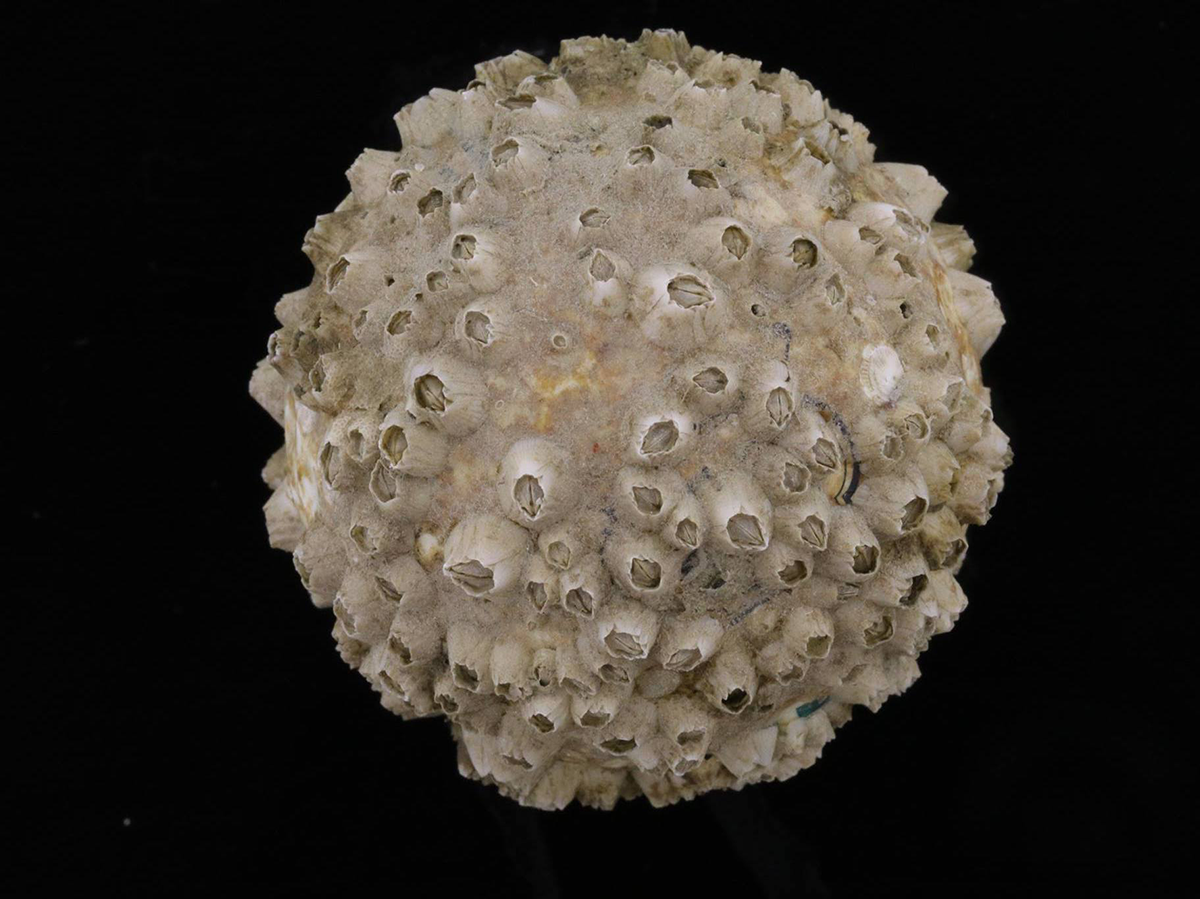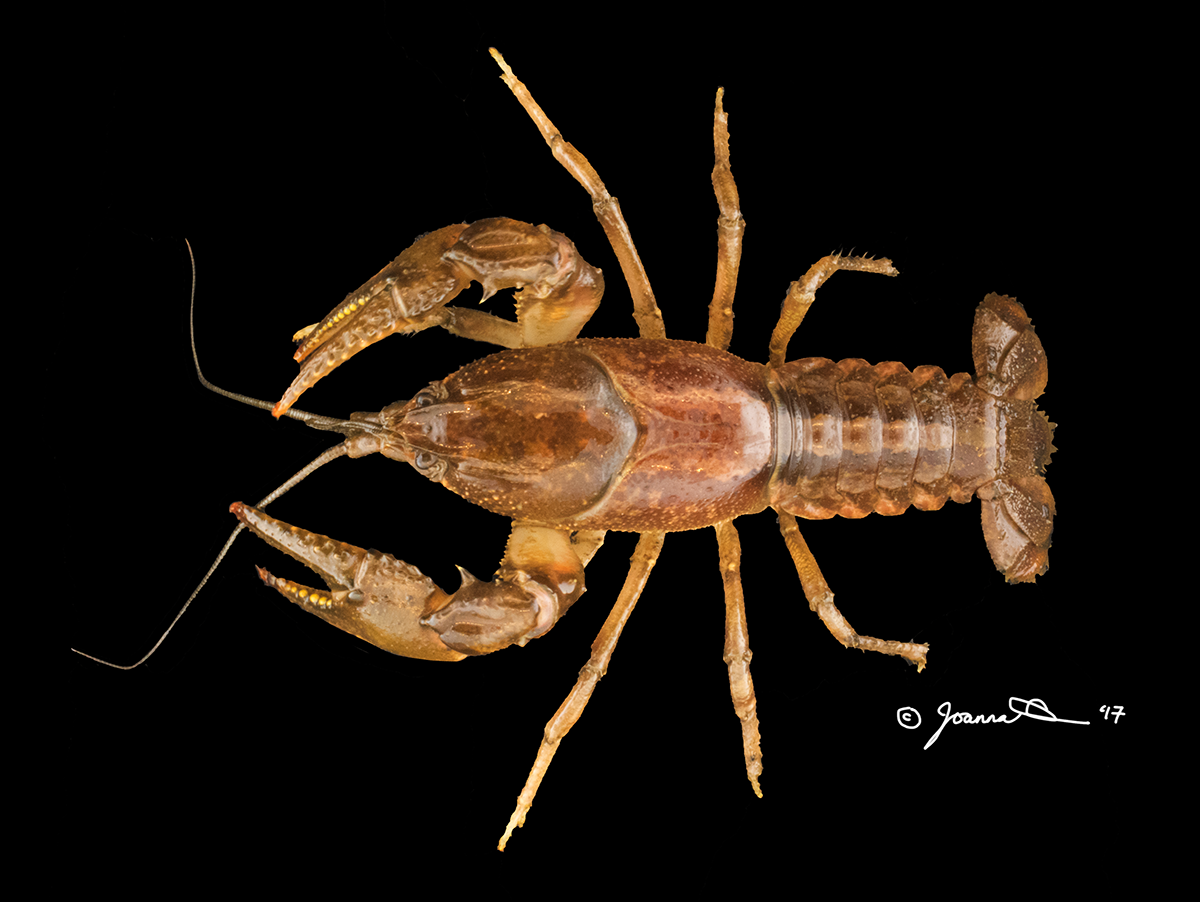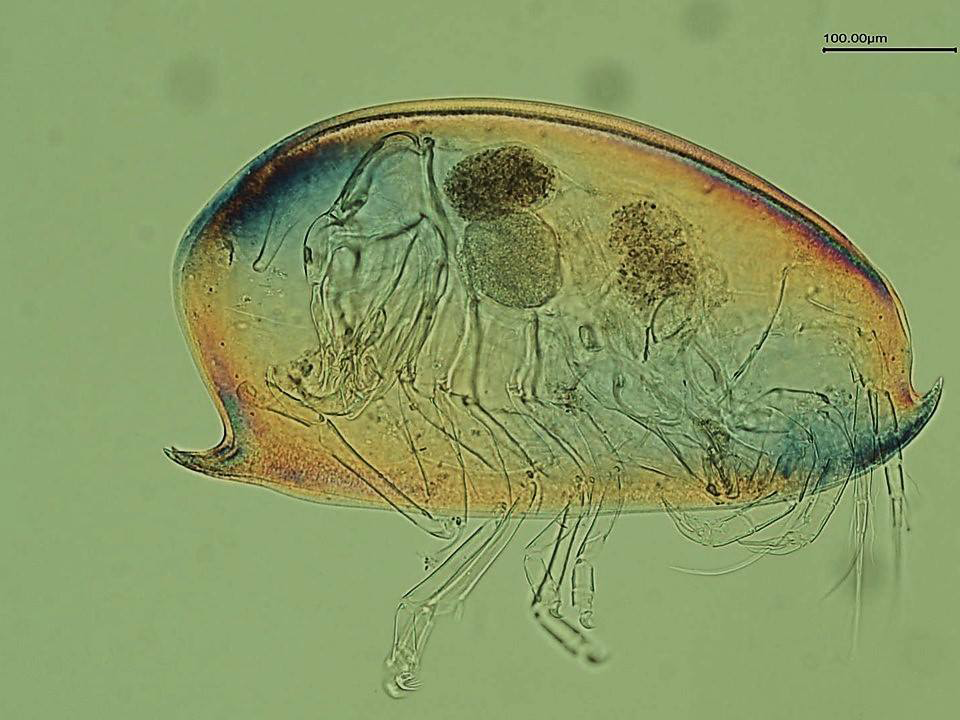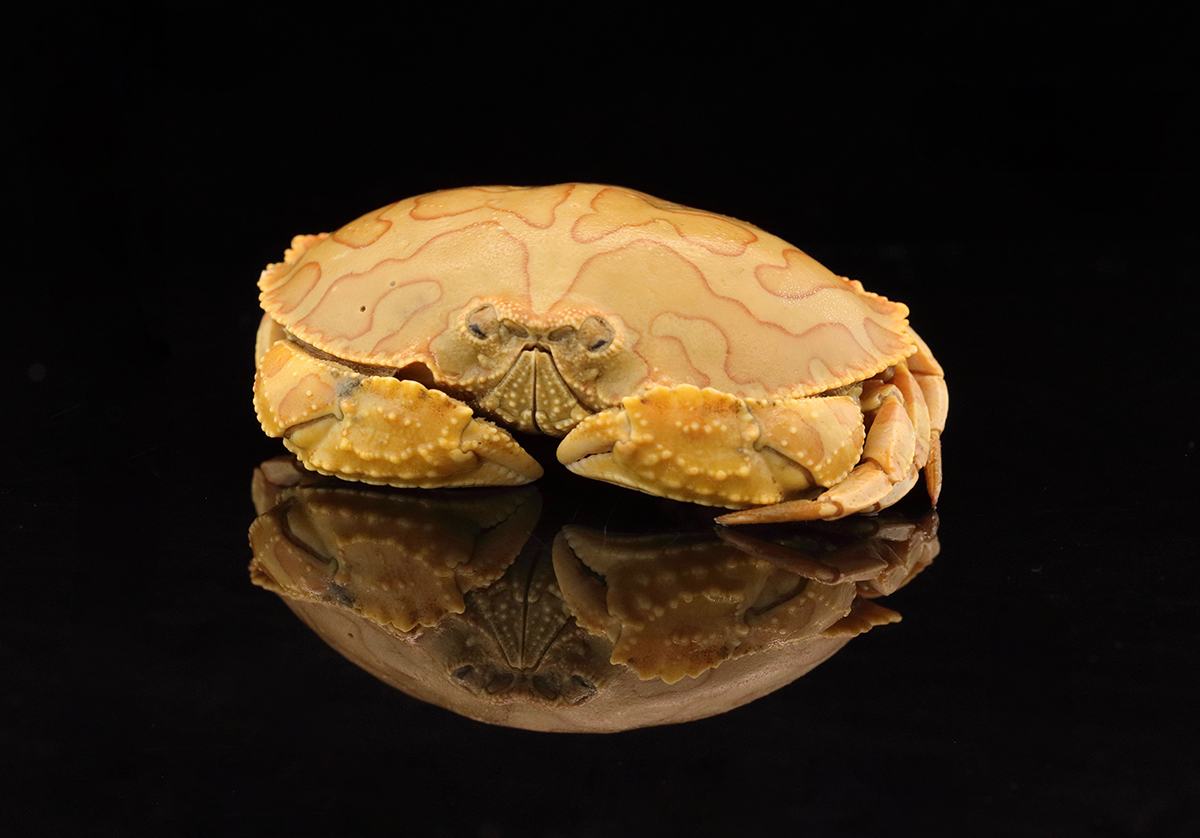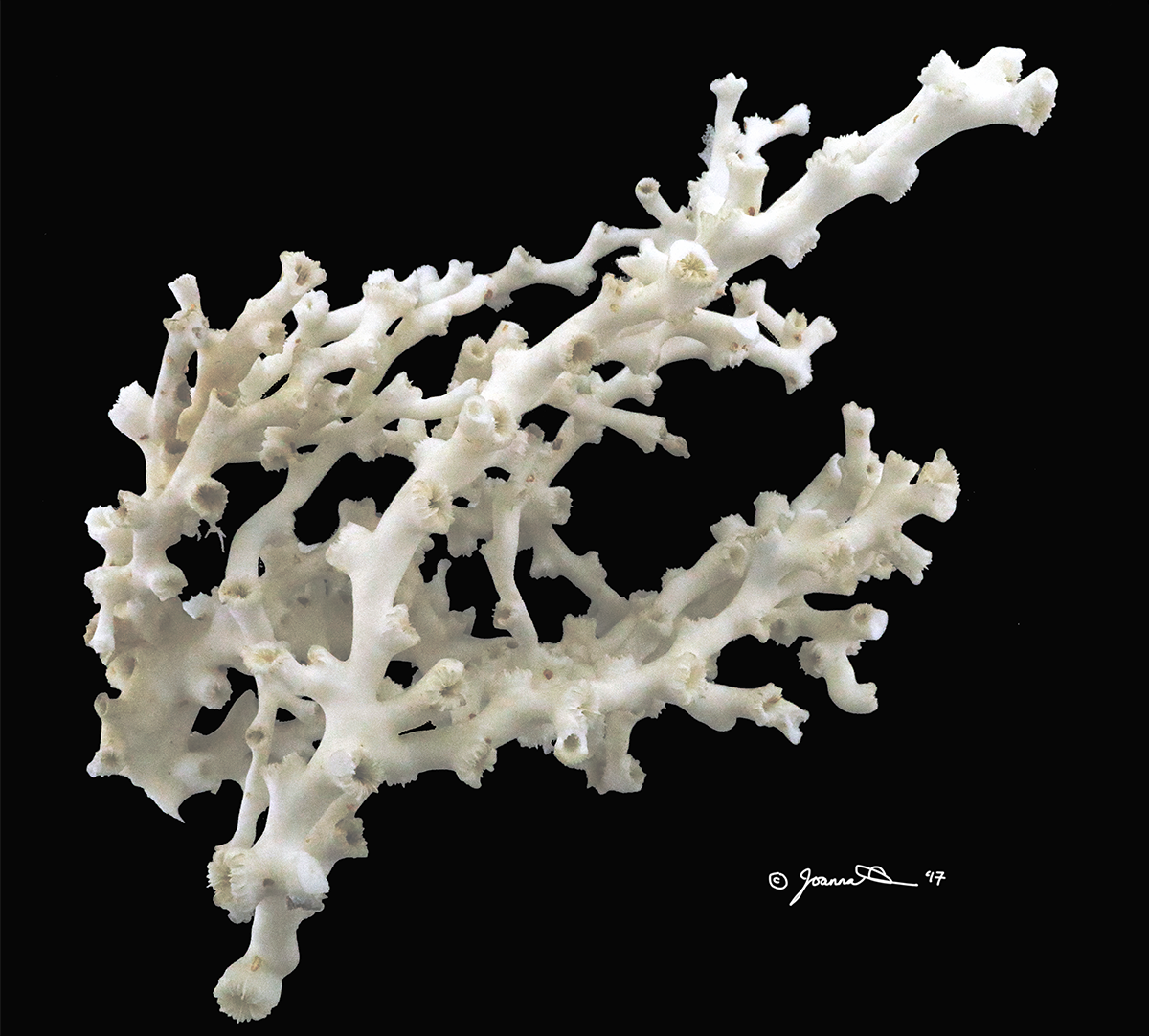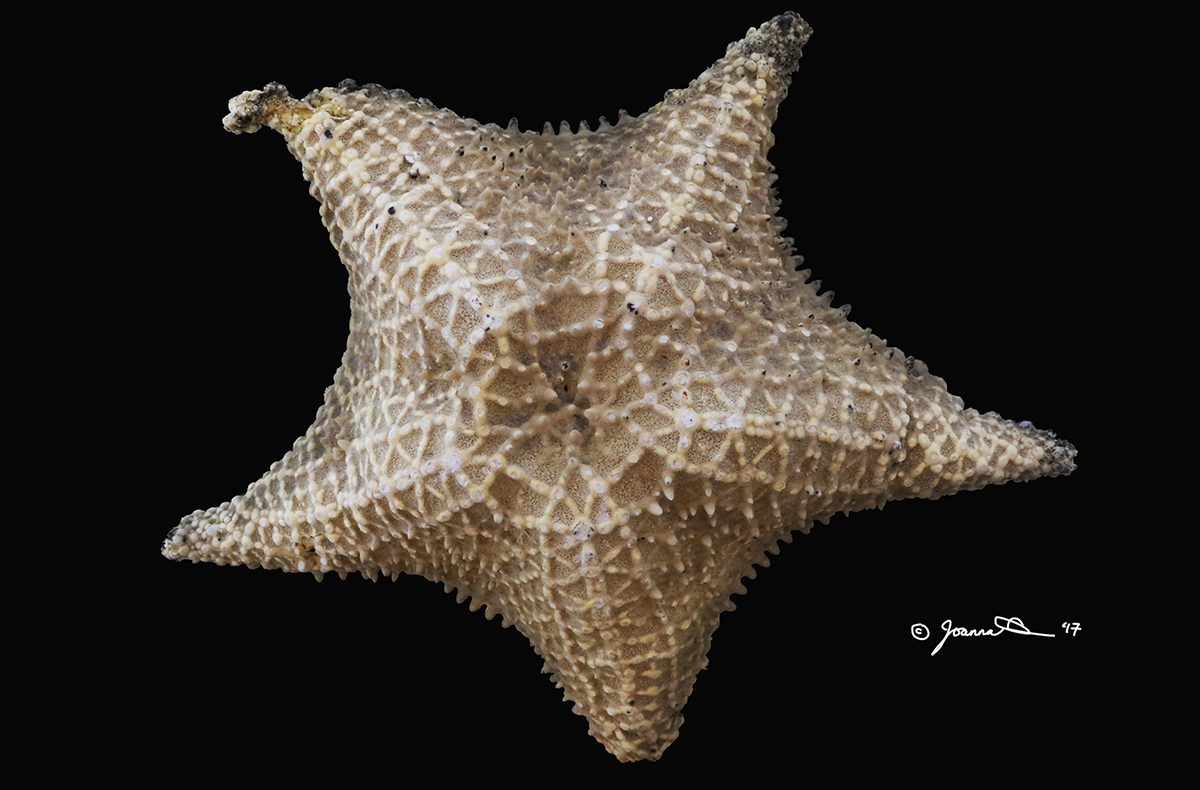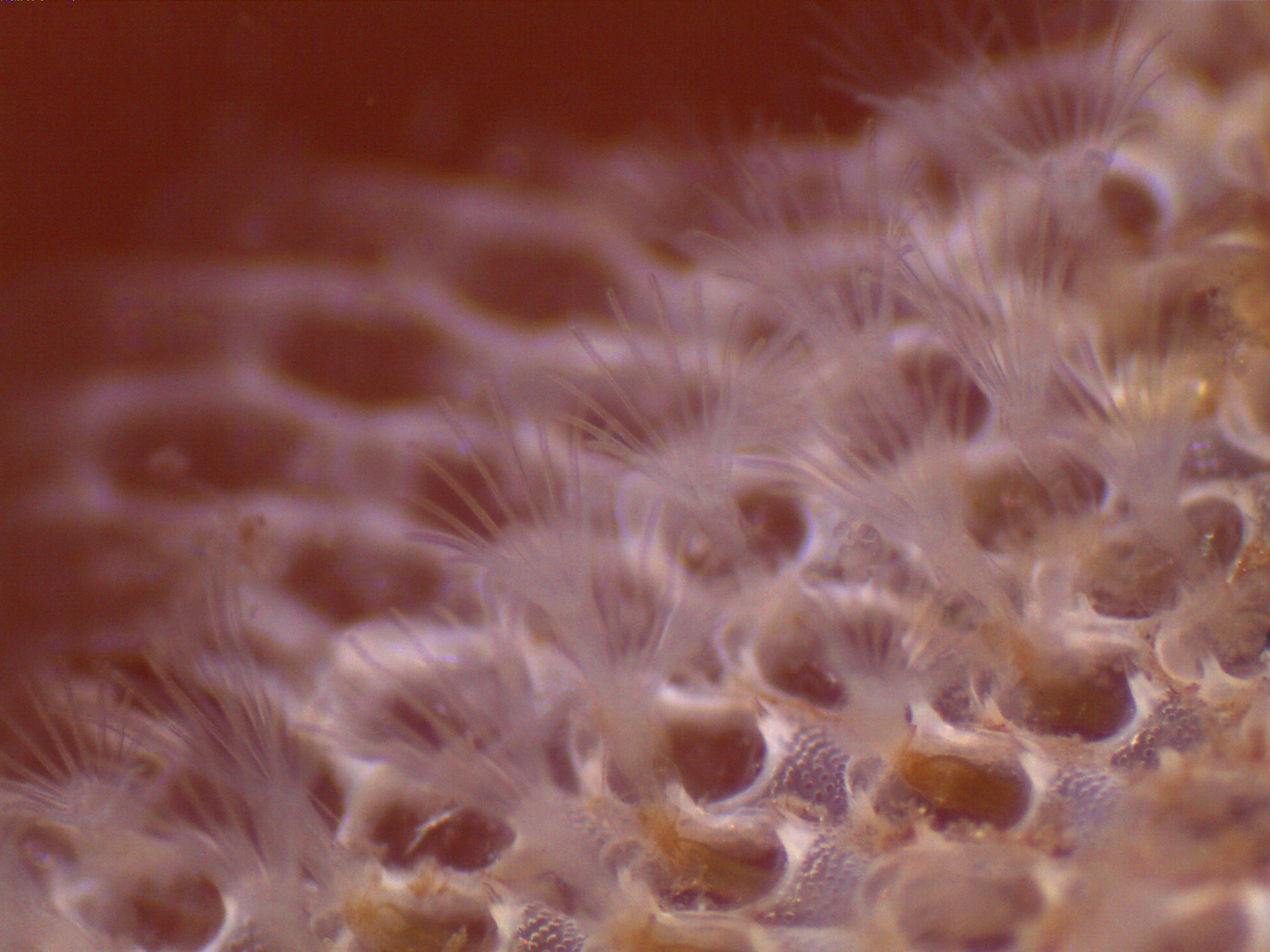OVERVIEW
Simply put, invertebrates are all animals that lack a backbone. Yet invertebrates are far from simple. Rather, they comprise an overwhelming majority of diversity of life on Earth, both in number and in form. Invertebrates can be found in the depths of the ocean, the high Himalaya Mountains, and nearly every habitat in between, terrestrial and aquatic.
The vast invertebrate holdings at the North Carolina Museum of Natural Sciences (NCSM or NCMNS) are split into two collections: Mollusks and Non-Molluscan Invertebrates. The Non-molluscan Invertebrate Collection was established in 2015 under Research Curator Dr. Bronwyn Williams, and includes what was formerly the Museum’s Crustacean Collection, Terrestrial Invertebrate Collection, and a portion of the Aquatic Invertebrate Collection. The Non-molluscan Invertebrate Collection covers a wide range of taxonomic groups, and includes representatives of more than 20 phyla; it does not include members of phylum Mollusca, such as mussels, clams, snails, octopuses, and squids, which are are housed separately in the Mollusk Collection.
The Non-molluscan Invertebrate Collection houses well over 30,000 specimen lots (where a lot contains one to many individuals collected from the same site at the same time) and more than 1500 type specimens (the physical specimens to which a taxonomic name is formally assigned). With specimens dating back to the 1850s, the Collection reflects over a century and a half of collecting in freshwater, terrestrial, and near- and far-shore marine habitats of the Carolinas, Mid-Atlantic Region, and southeastern USA. Holdings of certain taxonomic groups span a much broader, i.e., international, geographic scope. Yet, it is the Non-molluscan Collection in its entirety that reflects a rich history of scientific collecting and taxonomy, and thus a wealth of opportunities for research, education, and outreach.
STRENGTHS
The strengths of a museum collection reflect the research and interests of former and current curatorial staff, as well as major donations and acquisitions. The Non-molluscan Invertebrate Collection has one of the largest freshwater crayfish collections in, and of, the southeastern United States, resulting in large part from the taxonomic focus of former Research Curator of Crustaceans, Dr. John Cooper. The crayfish holdings in the Collection continue to expand in geographic and taxonomic scope due to ongoing research by the current Research Curator of Non-molluscan Invertebrates, Dr. Bronwyn Williams, and contributions from collaborative institutions. More than 250 crayfish species are represented in the Non-molluscan Invertebrate Collection, most of which are North American in origin. Crayfish holdings of particular note include a substantial diversity of obligate cave species, dozens of type specimens, and scores of lots of historical significance, including, but certainly not limited to, specimens collected by Walter Faxon in the late 1800s, the NCSM’s first, albeit unofficial, curator, C. S. Brimley in the 1920s, and renowned [marine] biologists G. Robert Lunz, Jr., and Austin B. Williams in the 1930s and 1950s, respectively.
Coincident with the strategic expansion of crayfish holdings in the Non-molluscan Invertebrate Collection has been rapid growth in number and diversity of two major groups of crayfish ectosymbionts, namely branchiobdellidans (crayfish worms) and ostracods in the family Entocytheridae. At present, the Non-molluscan Invertebrate Collection houses several thousand entocytherid specimens representing more than four dozen species, and 60,000+ branchiobdellidan specimens representing nearly 90 species.
The Non-molluscan Invertebrate Collection houses a substantial and internationally significant myriapod (= centipedes, millipedes, and kin) collection, including one of the most comprehensive collections of the widespread millipede genus Sigmoria. Although the majority of these holdings are from North Carolina, a considerable number of specimens were sampled from the Western United States and various tropical regions across the globe.
The Non-molluscan Invertebrate Collection is home to an estimated 10,000 lots of marine specimens. These lots, in large part acquisitions from the Charleston Museum, University of North Carolina Institute of Marine Sciences, and Duke University Marine Laboratory, together represent one of the largest and most historically important collections of marine invertebrates in the Mid-Atlantic Region. Spatial overlap in these collections results in an unparalleled time series for many taxa that extends for over a century. Primary holdings within these acquisitions are decapod crustaceans, although additional substantial holdings include annelids and echinoderms. Although these marine specimens are currently undergoing major curatorial attention, we hope to have these specimens “research-ready” soon.
DEVELOPMENTS AND FUTURE DIRECTIONS
The Non-molluscan Invertebrate Collection is home to hundreds of thousands of specimens, most of which are, at present, uncataloged and undatabased. Digitization of these data is a high priority for Non-molluscan Invertebrate Collection staff. These efforts will greatly enhance accessibility of the Collection’s holdings for the research community and general public alike. This process will take some time. Thus, we encourage anyone who would like information about our holdings to contact us.
The taxonomic breadth of the Non-molluscan Invertebrate Collection is vast, and as such, there is a portion that remains unidentified, or identified only to a broad taxonomic level. Further, many of these groups have undergone, or are actively undergoing, taxonomic revision, and are outside the area of expertise of Non-molluscan Invertebrate Collection staff. We welcome any and all assistance!
Among the fastest growing components of the Non-molluscan Invertebrate Collection are obligate symbionts of crayfishes. Yet, crayfishes are certainly not the only organisms to host symbiont species (think of the nursery rhyme, “The Siphonaptera”1). In fact, many specimens have several associate taxa, which may include obligate symbionts, opportunistic symbionts, or other organisms that may have just been in the same vicinity at the time of collection. Depending on how any given specimen was initially fixed and curated over time, it may have retained much of its associate community. For example, we recovered more than two hundred small crustaceans, annelids, etc. from a lot containing a single crab. Our goal is to preserve these communities for future taxonomic work and seemingly endless research possibilities. Please contact us if you are interested in learning more about these “community taxa” in the Non-molluscan Invertebrate Collection.
DONATIONS
Specimen donations come from a variety of sources, including research institutions, state and federal agencies, and private collectors. We encourage the donation and deposition of type specimens or series, and specimens that fill key taxonomic, geographic, and/or ecological gaps in the existing Non-molluscan Invertebrate Collection. To ensure proper stewardship of current holdings and future acquisitions, we ask that potential donations include detailed collection event data (e.g., date, specific location, collector, etc.). Please note that a donation may be refused if quality of the specimen(s) and/or data are deemed to be poor; acceptance of donations is at the discretion of the research curator.
ACCESSING THE COLLECTION
We welcome and encourage use of the Non-molluscan Invertebrate Collection for the purposes of research, education, and general advancement of knowledge. We regularly give guided tours to primary, secondary, and university students, and to members of the general public. We host visiting scientists to facilitate research efforts, frequently loan material to other institutions, and even help students with class projects.
Our goal is to make the Non-molluscan Invertebrate Collection openly accessible through the process of digitization. This includes specimen data and high-quality images of exemplars. A small percentage of the Collection’s specimen data is currently available via the NCSM online database; please check back frequently for updates. Efforts to fully digitize holdings in the Non-molluscan Invertebrate Collection are ongoing, but will take time. As such, please contact us with any questions regarding our holdings. We are amenable to specific data requests, and strive to fulfill such requests in a timely manner.
For more information, or to schedule a Non-Molluscan Invertebrate Collection visit, please contact Megan McCuller at megan.mcculler@naturalsciences.org or 919.707.9957.
Our online collections site is currently unavailable. For information about our collections, please contact the collections manager directly.
Check out our Invertebrates Facebook Group.
1 The first verse of "The Siphonaptera" reads as this:
"Great fleas have little fleas,
Upon their backs to bite 'em,
And little fleas have lesser fleas,
and so, ad infinitum."
— Augustus De Morgan
Staff
- Curator: Bronwyn Williams
- Collections Manager: Megan McCuller


